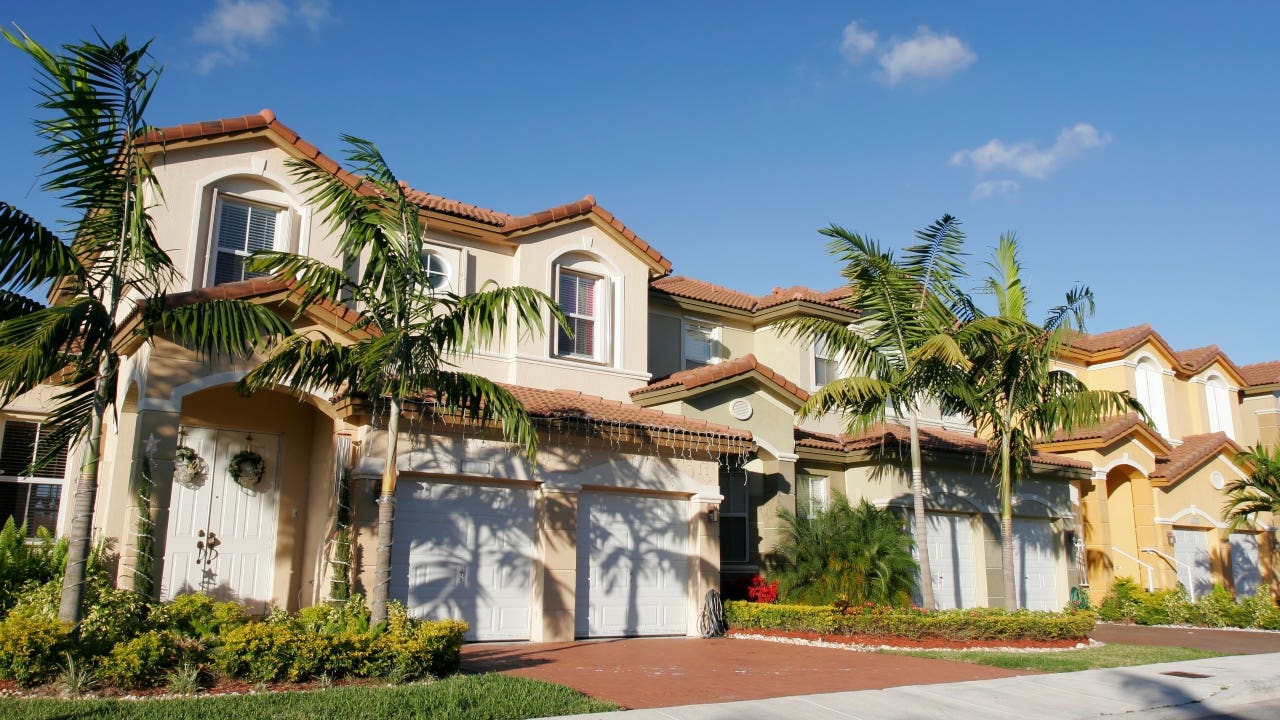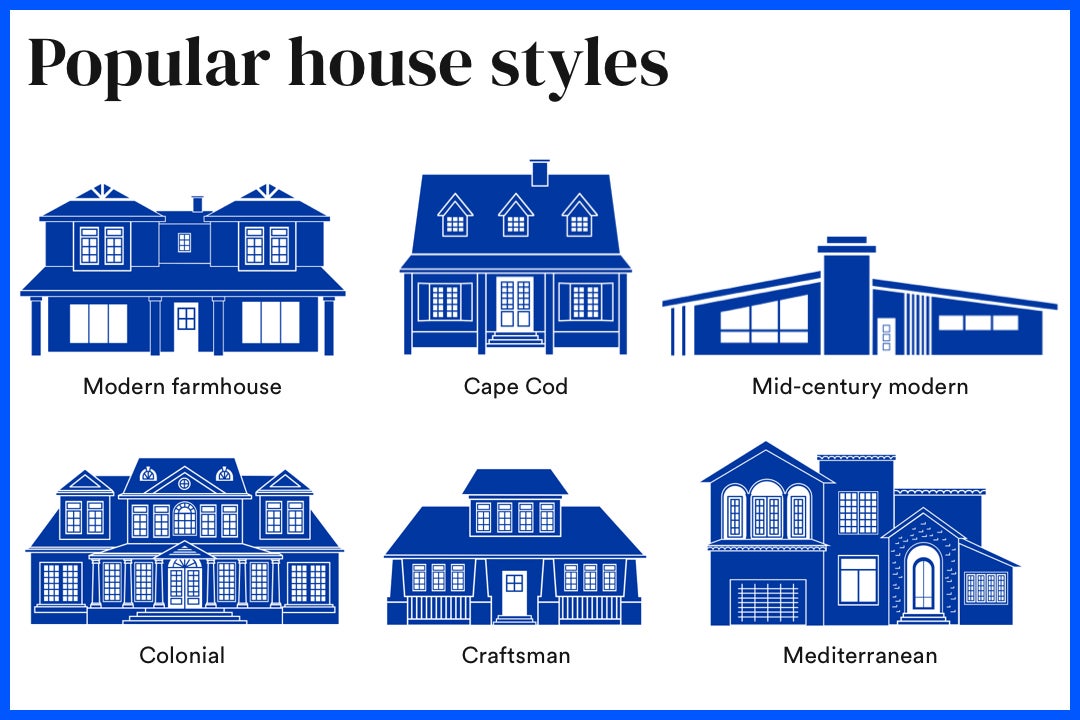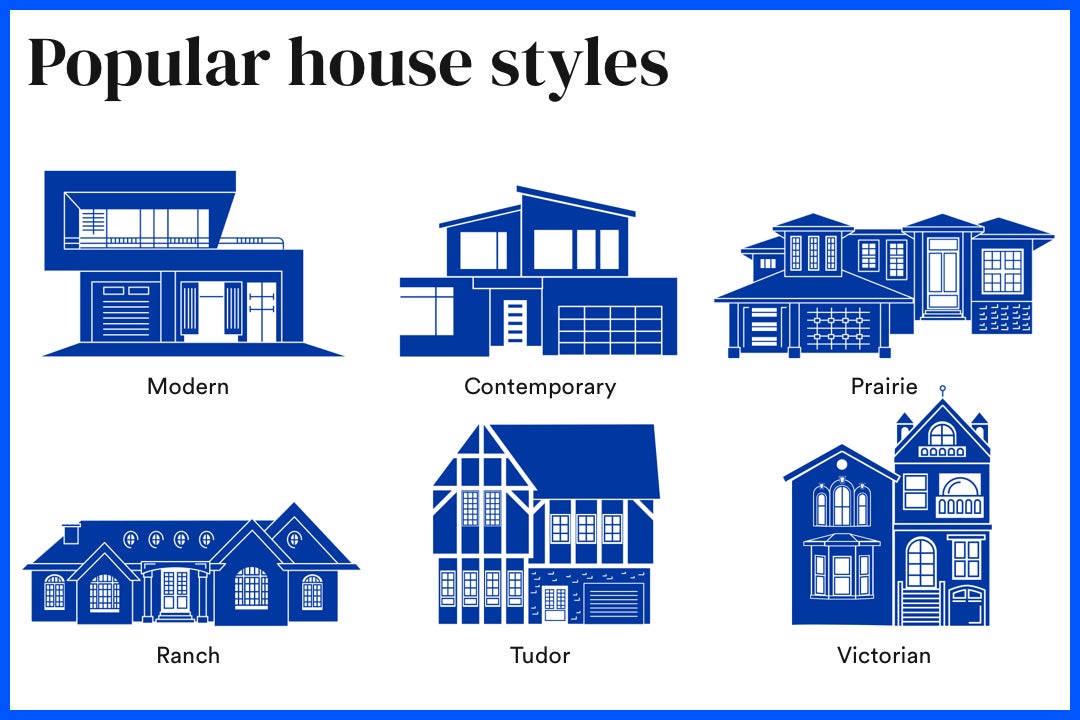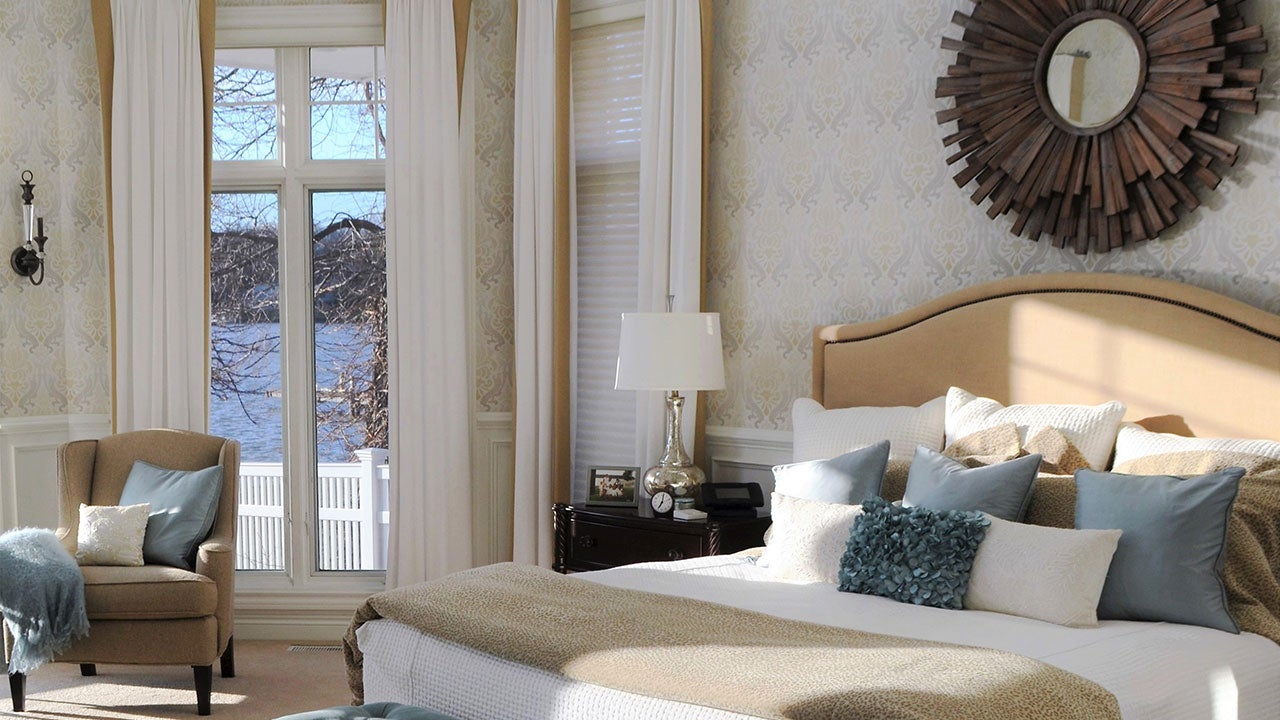Which of these house styles is right for you?

No matter where you live, dozens of architectural house styles exist, from the extravagant to the quaint to the modern. Some styles even mix several elements from a variety of classic and current-day designs.
“A home’s style first has to resonate on an emotional basis with the buyer,” says Deryl Patterson, an architect and president of Housing Design Matters in Jacksonville, Florida.
Patterson, for her part, can still recall visiting her aunt’s mid-century modern home in the early ‘60s.
“I remember looking at how austere her family room was,” Patterson says. “The most colorful thing in the whole room was the Kleenex box.”
Which style will suit you or your family best? Here’s a breakdown of the most popular house styles to consider.

Modern farmhouse
The modern farmhouse style reigns most popular in 42 states in the U.S., mainly in the Northwest, East and Southeast states, according to a recent survey of 5,000-plus Americans by Homes.com. Respondents said they were drawn to the modern farmhouse look because the style is “aesthetically pleasing but not boring.”
Other characteristics of this style include:
- Clean lines and cozy elements
- Family-friendly size
Cape Cod
A Cape Cod-style home is a perfect starter home because of its simplicity, explains Michael Moritz, principal architect at Stonewater Architecture LLC in Summit, New Jersey.
“They have a cute feeling to them,” Moritz says.
The top qualities of a Cape Cod include:
- Expandability, either by adding on vertically or extending horizontally in the back
- Steep gable roofs or two or more small dormers
Mid-century modern
The mid-century modern style came in second in the Homes.com survey, preferred primarily by those in the Midwest and in places like Arizona and Colorado. In mid-century modern homes today, you can expect to find polished granite floors or honed granite along with dark stained woodwork, Moritz says.
The look is best known for:
- Clean lines and an open floor plan
- Large windows
- Minimal, natural touches
Colonial
The British-inspired Colonial has been popular since settlers arrived in New England hundreds of years ago. Those who embrace the charm of yesteryear and a degree of symmetry might appreciate this style.
Some of the traits associated with a Colonial-style home are:
- Center-hall layout with chimney in the middle
- A long, pitched roof, shorter in the front and sloping down in the back (called a “saltbox”)
Craftsman
The Craftsman-style home, made famous by architect and furniture designer Gustav Stickley, became popular in the early 1900s. This style attracts buyers for its simple, non-ornate style.
Some features present in a Craftsman home include:
- Overhanging eaves and low-slung gabled roof
- Broad front porches with columns
- Mixture of natural materials such as stone, brick, wood or stucco
Mediterranean
A Mediterranean-style home’s large windows beckon homeowners, especially in warmer weather climates. The vaulted ceilings inside lend a sense of luxury and spaciousness, along with its characteristic large patios and beautiful gardens.
Some of the Mediterranean style’s other distinctive qualities are:
- Low tiled roof
- Stucco walls in white or pastels
- Archway doors and windows
Modern
The essential features of a modern-style home vary depending on whether you live in a more urban or rural setting, but it typically includes a low-pitched or flat roof. This style tends to be attractive to trendsetters and people with lots of confidence, Patterson says.
The other qualities of a modern-style home might include:
- Awning over the front door
- Simple, clean cabinets with no raised panels
- Expansive windows
Contemporary
The features of a contemporary-style home can also be fluid. Both Moritz and Patterson say it depends on the area you live in, and many times, the term contemporary is interplayed with modern to describe the style. Realtor Magazine describes contemporary as having “odd-sized and often tall windows” and a “lack of ornamentation.”
Contemporaries can also include:
- A flat or gabled roof
- Just one story with an open floor plan
- Asymmetrical lines
Prairie
The famous architect Frank Lloyd Wright popularized Prairie-style homes, which often include horizontal lines to mimic a flat setting. Those who don’t like segmented rooms and prefer an open floor plan might especially enjoy this style.
Prairie features include:
- Low-pitched roof with overhangs
- Centrally placed chimney
Ranch
“We do a lot of work in Florida and Texas, and the ranch plan is king,” Patterson says.
Ranch-style homes appeal to those who want single-story living, and are ideal for those who don’t want to hear the pitter-patter of feet above them, Patterson says. Their construction usually allows for a wide open or semi-open floor plan, along with:
- Split-level design
- Lower roof
- Smaller yard
Tudor
If you love the Gatsby-era of grandeur and expensive-looking millwork, then a Tudor-style home might be right for you, Moritz says. Some of this style’s details include:
- High ceilings
- Stone or limestone fireplaces
- Wood elements everywhere, including heavy beams
Victorian
Bright bay windows, ornamental chimneys and large porches give curb appeal to Victorian-style homes, Moritz says. These kinds of homes can appeal to anyone with a love of historical settings or woodwork.
Some other Victorian characteristics might include:
- Proximity to downtown areas of big cities
- Wraparound porch
- Round angles, towers, turrets and dormers
Which is right for you?
Along the way, many architectural home styles have integrated different pieces of other styles, Patterson says, so it’s entirely possible to find a hybrid design that suits you well rather than a specific type.
One factor you should settle on, however, is whether or not you like symmetry or asymmetry, Patterson suggests. For instance, some homeowners prefer the front door centered between windows.
“That’s a very organized style and makes those who like it feel good, but others find that boring,” Patterson says. “There’s something out there for everyone.”
Learn more:
You may also like

Homeowners choose minimal insurance due to rising rates. How risky is it?

7 ways to save money on home maintenance





